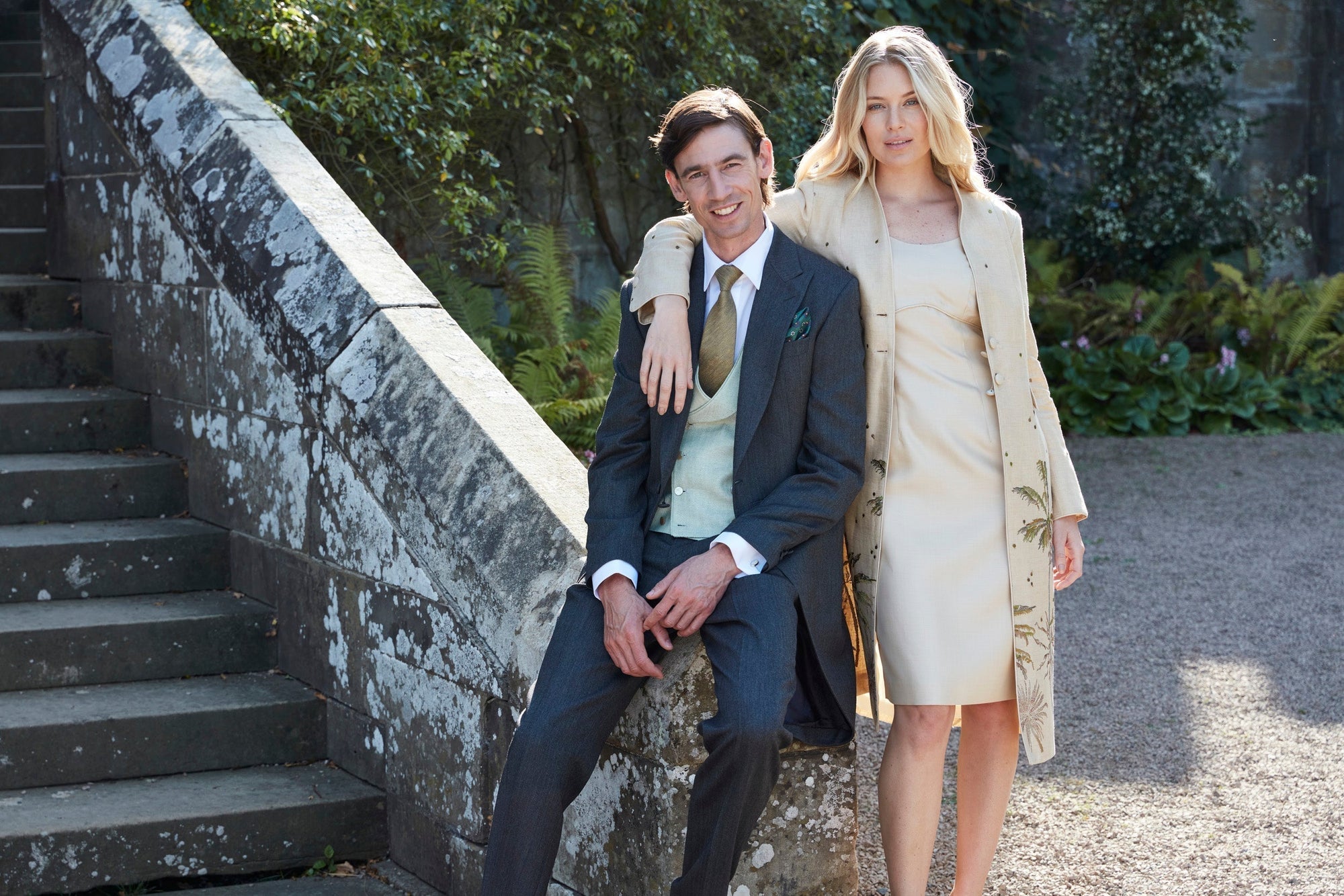For our Spring/Summer '24 campaign shoot, Favourbrook was lucky enough to be able to access Carlton House Terrace in St. James, currently the home of the British Academy at numbers 10-11. It's a fascinating building, especially when one digs a little deeper into its history. The white stucco-faced terraces were built on Crown land - on what was then known as "the Royal Garden" - between 1827 and 1832 to overall designs by John Nash. The building was once the original location for the Information Research Department (IRD), a secret branch of the UK Foreign Office dedicated to creating pro-colonial and anti-communist propaganda during the Cold War so you can only imagine some of the hushed conversations whispered along the impressive corridors. The Terrace has had many famous residents. in fact, including The Carlton Club, numerous Prime Ministers, William Waldorf Astor, Egyptian billionaire arms dealer and former spy Ashraf Marwan (he actually died falling from his balcony) and the MI6 to name but a few!

In the early 1700s, a grand townhouse that was built on the land came to be the home of one Baron Carleton. On his death, the building was passed down to the architect and aesthete Lord Burlington who was Carleton's nephew. The lease changed hands once again in 1732, becoming the property of Frederick, Prince of Wales, eldest son of George II, who predeceased his father, dying in 1751. His widow, Augusta, continued to live in the house until it was devolved to her son, George III in 1772. That little game of nobility monopoly takes us to George, Prince of Wales, who was bequeathed the property by his father in 1783. Not a bad gift for your coming of age.

The Prince was something of a party animal, and didn't exactly have much time for bookkeeping. He racked up huge debts renovating and enlarging the house, and was at constant loggerheads with his disapproving father. At one point, the house even became a rival Court. Oscar Wilde makes reference to Carlton House in his fictional novel The Picture of Dorian Gray, published in 1890. In chapter 11, as the protagonist looks over portraits of his ancestors, he writes...
"What of the second Lord Beckenham, the companion of the Prince Regent in his wildest days, and one of the witnesses at the secret marriage with Mrs. Fitzherbert? How proud and handsome he was, with his chestnut curls and insolent pose! What passions had he bequeathed? The world had looked upon him as infamous. He had led the orgies at Carlton House. The star of the Garter glittered upon his breast."
 When the Prince became King George IV in 1820 he moved to Buckingham Palace where instructions were given in 1826 that "Carlton Palace" should be given up to the public, be demolished and the site and gardens laid out as building ground for "dwelling houses of the First Class". He deemed Carlton House inadequate for his needs! Much of the furniture went to Buckingham Palace and other Royal residences, while certain columns of the portico were re-used in the design for the new National Gallery in Trafalgar Square. Chimney pieces installed at Buckingham Palace are certainly identifiable as coming from Carlton House as are many doors at Windsor Castle.
When the Prince became King George IV in 1820 he moved to Buckingham Palace where instructions were given in 1826 that "Carlton Palace" should be given up to the public, be demolished and the site and gardens laid out as building ground for "dwelling houses of the First Class". He deemed Carlton House inadequate for his needs! Much of the furniture went to Buckingham Palace and other Royal residences, while certain columns of the portico were re-used in the design for the new National Gallery in Trafalgar Square. Chimney pieces installed at Buckingham Palace are certainly identifiable as coming from Carlton House as are many doors at Windsor Castle.
So then it was John Nash's turn to build his vision of Carlton House Terrace. According to the architectural historian Sir John Summerson, Nash's designs were inspired by Ange-Jacques Gabriel's buildings in the Place de la Concorde, Paris. Once complete, Nash thought he could make a pretty penny by keeping the letting of the sites in his own hands. Ground rents, payable to the Crown, were set at the high rate of 4 guineas per foot frontage. Nash took lease of five sites –numbers 11–15, intending to let them on the open market at a substantial profit, but in fact he would not cover his total costs and made a small loss on the transactions. The proceeds of the leases were put towards the cost of renovating Buckingham Palace.

Which takes us all the way to today, where we find ourselves shooting Favourbrook's Spring/Summer '24 collection in the magnificent rooms of the British Academy, walls adorned with an eclectic curation of art spanning the ages. One can only imagine the figures and formalwear looks that have walked these halls over the decades, but suffice to imagine they were probably of a high standard. Fashions will have certainly changed, even the very definition of sartorial elegance has evolved to something a good deal more minimalistic than the togs George IV was partying in. Nevertheless, the importance of dressing with style and panache has never dimmed and long may it be so!













